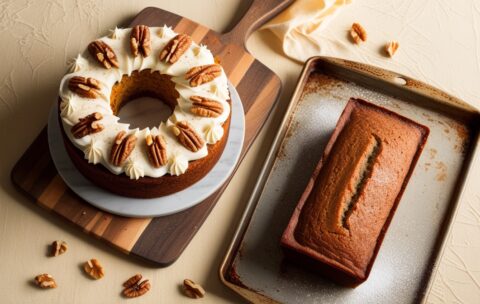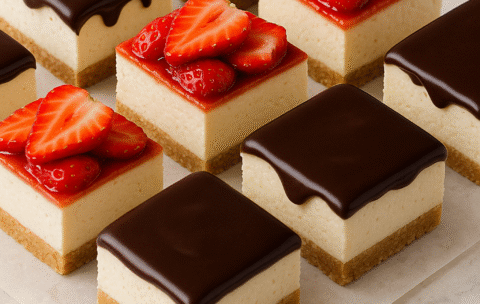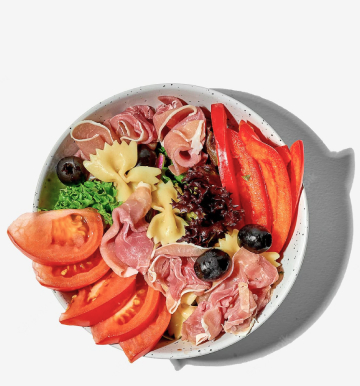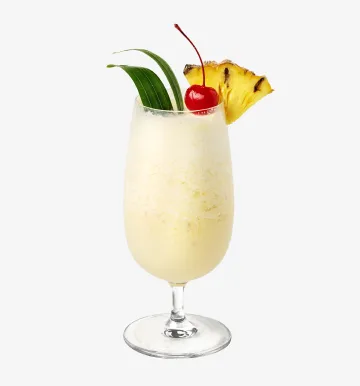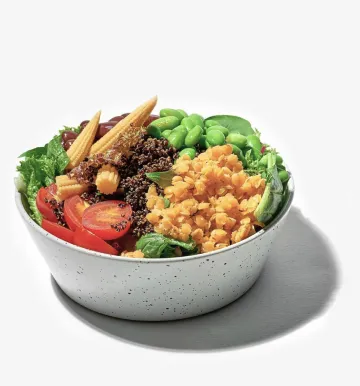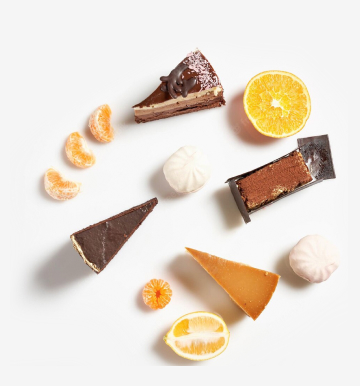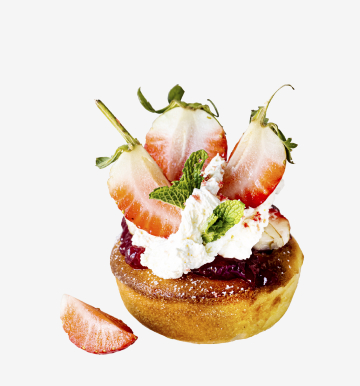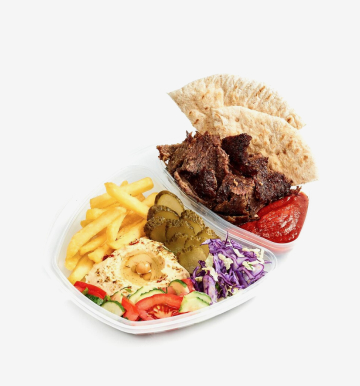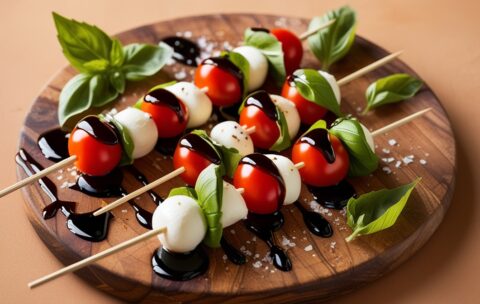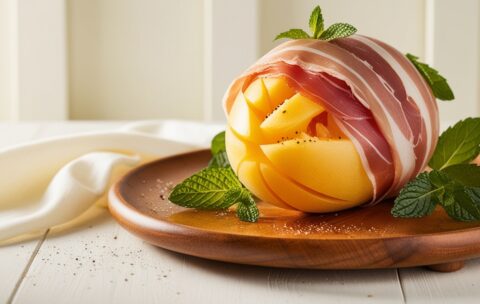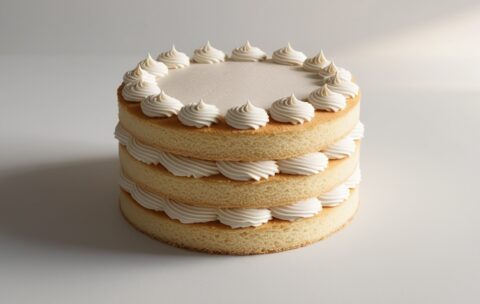Home Update 02
October 4, 2023 2025-06-05 13:04Home Update 02
Become a Home Chef
Learn to cook from scratch and master restaurant-quality meals in your own kitchen. Perfect for beginners and food lovers.

Our Top Courses
We've selected the best programs to get you started. Each course offers step-by-step lessons, hands-on recipes, and guaranteed results — even for beginners.
Decorative Piping & Sugar Flowers
3 Lessons
4.3 hours
Intermediate
What you'll learn
Icing Consistency & Color Blending
Adjusting buttercream and royal icing to the proper firmness for different piping tasks.
Techniques for tinting icing and gum paste to achieve natural, gradient effects.
Piping Basics to Advanced Motifs
Foundational strokes (dots, lines, shells) leading to scrolls, rosettes, ruffles, and lace patterns.
Creating texture, dimension, and contrast through varying pressure, speed, and tip selection.
Sugar Flower Construction
Preparing and conditioning gum paste and fondant for pliability.
Forming petals, leaves, and buds for common flowers (roses, peonies, ranunculus).
Assembling individual elements into realistic bouquets and sprays.
Composition & Placement
Designing balanced cake layouts: focal points, color harmony, and scale.
Securing decorations on tiered and multi-surface cakes without collapse.
Troubleshooting & Finishing Touches
Preventing issues such as cracking, sagging, or color bleeding.
Applying final details: dusting, veining, and edible luster for lifelike appearance.
Mini Crab Cakes with Lemon Aioli
5 Lessons
58 minutes
Intermediate
What you'll learn
How to select and handle fresh lump crab meat for maximum flavor and minimal shell fragments.
The proper ratio of binders (egg, mayonnaise, breadcrumbs) to create tender, non-gummy crab cakes.
Techniques for shaping consistently sized mini patties that hold together during cooking.
Pan-frying tips to achieve a uniformly golden, crisp exterior without overcooking the interior.
How to prepare a smooth, emulsified lemon aioli with the right balance of acidity and creaminess.
Plating and serving suggestions to present mini crab cakes attractively for guests.
Osetra Caviar Blinis
4 Lessons
1.4 hour
Intermediate
What you'll learn
How to mix, ferment, and cook a classic buckwheat-and-wheat blini batter for the lightest possible texture.
Techniques for keeping blinis uniformly round and perfectly golden—no uneven edges or undercooked centers.
Best practices for handling and storing Osetra caviar to preserve its delicate flavor and texture.
Methods of layering crème fraîche (or sour cream) and caviar for a visually striking presentation that amplifies taste.
Pairing suggestions: which garnishes (chives, dill, lemon zest) accentuate caviar without overpowering it.
Carrot Cake & Spiced Loaf Cakes
2 Lessons
2.2 hours
Intermediate
What you'll learn
How to grate carrots (or prepare alternative base ingredients) to achieve ideal moisture and texture
Techniques for toasting nuts and folding mix-ins to prevent a heavy crumb
Spice blending ratios for cinnamon, nutmeg, ginger, and cloves to balance warmth and sweetness
Methods to cream butter and sugar just enough—no overmixing—so loaves rise evenly without tunnels
Frosting options: crafting classic cream cheese frosting, drizzling brown butter glaze, and applying a neat powdered sugar dusting
Variations on the base recipe (apple-spice, pumpkin-spice, coconut-carrot) to adapt to seasonal ingredients
Cinnamon Sugar–Coated Churro Cake Bites
3 Lessons
4 hours
Intermediate
What you'll learn
How to bake and crumble a base cake optimized for cake bites
Ratio of cake crumbs to filling for ideal texture and binding
Frying vs. baking methods for a golden, light crust
Blending and heating cinnamon-sugar coating for crisp adhesion
Shaping techniques for uniform, crack-free bites
Serving and storage tips to keep bites fresh and crunchy
Louis XIII Pure Gold Cocktail
4 Lessons
2.3 hours
Intermediate
What you'll learn
How to select and handle Louis XIII Cognac to preserve its intricate aromatic profile
Techniques for incorporating edible gold safely and attractively
Crafting a saffron-infused vermouth modifier that enhances, not overpowers, the cognac’s rancio
Proper stirring and dilution to maintain clarity while achieving silky texture
Choosing quality orange bitters and balancing their citric-spice character against the spirit base
Presentation tips: from glass choice to garnish placement for maximal visual impact
Serving temperature guidelines to showcase every nuance of ultra-aged cognac
Apple Strudel
4 Lessons
4.3 hours
Intermediate
What you'll learn
How to prepare and knead traditional strudel dough, achieving elasticity without gluten overdevelopment.
Techniques for resting and stretching dough until it is paper-thin.
How to make a perfectly balanced apple filling: selecting the right apple varieties, mixing sugar, spices, raisins, and breadcrumbs.
Methods for brushing with butter and rolling without tearing dough.
Baking tips to ensure a golden, crisp crust and tender, aromatic interior.
Variations: nut-studded apple strudel, cherry-apple combination, nut-free options for allergies.
Simple plating and serving suggestions—warm from the oven with vanilla sauce, whipped cream, or a dusting of powdered sugar.
Piña Colada
5 Lessons
1.6 hour
Intermediate
What you'll learn
Historical Roots & Evolution: Explore how the Piña Colada emerged in Puerto Rico’s bars during the 1950s, and how it became the island’s official drink.
Ingredient Selection: Discover why cream of coconut (e.g., Coco López) is preferred over plain coconut milk, and how choosing fresh versus canned pineapple juice affects flavor.
Blending Techniques: Learn the proper blender speed and ice ratio to achieve a silky-smooth texture without over-diluting.
Presentation & Garnishing: Master professional garnishing methods—how to cut a pineapple wedge, position a maraschino cherry, and optional sugar-rim techniques—to create an Instagram-worthy pour.
Variation & Customization: Experiment with different rums (e.g., aged vs. silver), add fruit purees (strawberry, mango), or create a “Virgin Piña Colada” by omitting alcohol.
Tasting & Pairing: Understand how to balance sweetness and acidity, and which snacks or light bites (e.g., coconut-lime shrimp) complement this creamy tropical drink.
No-Bake Cheesecake Layered Cake Squares
5 Lessons
3.5 hours
Intermediate
What you'll learn
Preparing and pressing the ideal crust (graham, cookie, or nut-based)
Mixing smooth, lump-free cheesecake filling with flavor variations (vanilla, citrus, chocolate)
Layering multiple cheesecake batters for striped or marbled effects
Setting and chilling methods to ensure clean, precise slices
Decorating techniques: fruit compotes, ganache drips, whipped cream piping
Cutting and serving tips to maintain sharp edges and professional presentation
International Cake Traditions
5 Lessons
2.9 hours
Intermediate
What you'll learn
How to prepare and bake at least five signature cakes from different countries, using authentic ingredients and methods
The cultural and historical significance of each cake: when and why it’s traditionally served
Variations on flavorings and decorations that make each region’s version unique
Techniques for achieving proper texture, moisture, and flavor balance in international recipes
Tips for adapting ingredients when certain items are not readily available in your area
Presentation ideas to honor traditional styles (for example, Panettone’s distinctive domed shape or a Japanese wagashi’s intricate design)
Choose Your Category
Our courses are grouped by category to help you find what suits your taste. From quick dinners to gourmet desserts — start with what inspires you.



About Our Culinary Journey
We are passionate about bringing the joy of cooking to everyone. Our mission is to empower food lovers with the skills and confidence to create delicious meals at home. With expert chefs, innovative teaching methods, and a love for culinary arts, we’re here to inspire your kitchen adventures.
Our Commitment
Everyone can cook well. Our courses offer clear guidance to ensure success for all skill levels.
Community Focus
Join our foodie community. Share creations and grow in a supportive environment.
Why Choose Our Culinary Courses?
Our courses are designed to make cooking fun, accessible, and inspiring. Whether you're a beginner or a seasoned cook, our unique features will help you elevate your skills and unleash your culinary creativity.

Expert Instructors
Learn from world-class chefs with years of experience. Our instructors guide you step-by-step, sharing professional tips.
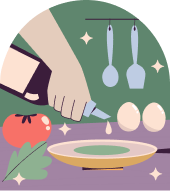
Flexible Learning
Study at your own pace, anytime, anywhere. Our online platform offers 24/7 access to lessons, so you can fit cooking into your busy schedule.

Hands-On Recipes
Practice with real recipes designed for all skill levels. From classic dishes to modern creations, you’ll master meals that impress every time.
What Our
Students Say
Hear from our happy students who have transformed their cooking skills with our courses. From beginners to seasoned cooks, our community loves sharing their success stories!
"This course completely changed how I cook! The instructors are so knowledgeable, and the lessons are easy to follow. I’m now confident making dishes I never thought I could."
Emma Johnson
"I love the flexibility of these courses. I can learn at my own pace and still feel supported. The recipes are amazing, and I’ve impressed my family with new dishes!"
Michael Chen
"The vegan cooking course was a game-changer for me. I learned so many creative ways to make plant-based meals that taste incredible. Highly recommend!"
Sophie Martinez
"The hands-on approach made learning so fun! I went from burning toast to baking artisan bread in weeks. Thank you for such an inspiring experience!"
James Carter
Discover Our Newest Culinary Courses
Get inspired by our latest additions! These exciting courses bring fresh ideas and techniques to your kitchen, perfect for food lovers eager to try something new. Browse our carousel to find your next culinary adventure.
Caprese Skewers with Balsamic Glaze
4 Lessons
1.8 hour
Intermediate
What you'll learn
Selecting and preparing ripe cherry tomatoes, fresh basil, and high-quality mozzarella for optimal flavor.
Assembling skewers with balanced proportions to ensure each bite features tomato, cheese, and basil.
Creating a silky balsamic glaze by reducing balsamic vinegar to the perfect viscosity.
Techniques for drizzling glaze artistically for presentation.
Storing and transporting assembled skewers without compromising texture or appearance.
Flavor pairing suggestions (e.g., adding a sprinkle of sea salt, cracked pepper, or a drizzle of olive oil).
Prosciutto-Wrapped Melon
4 Lessons
2 hours
Intermediate
What you'll learn
How to select the best melon (e.g., cantaloupe or honeydew) for optimal sweetness and texture
How to choose high-quality prosciutto (understanding different curing methods and grades)
Proper slicing and portioning techniques for both melon and prosciutto
Tips for assembling prosciutto strips and melon wedges so they stay intact and look polished
Flavor-pairing insights (e.g., drizzling aged balsamic or adding a fresh herb garnish)
Coq au Vin
3 Lessons
2.3 hours
Intermediate
What you'll learn
Ingredient Selection & Preparation:
How to choose the right cut of chicken (whole, thighs, or a combination) and select complementary wine (e.g., Burgundy Pinot Noir or alternative regional varieties).
Proper techniques for trimming, seasoning, and preparing lardons, mushrooms, and root vegetables.
Braising Fundamentals:
The importance of searing chicken pieces for color and flavor development.
How to deglaze a Dutch oven or heavy-bottomed casserole with red wine, preserving all the fond (browned bits) on the pan bottom.
Flavor-Building Strategies:
Layering aromatics—onion, garlic, carrot, thyme, and bay leaf—to create depth.
Controlling heat and timing for a slow, gentle simmer that yields tender meat and a concentrated sauce.
Sauce Reduction & Finishing Touches:
Techniques for skimming excess fat and reducing the braising liquid to a velvety consistency.
Tips for adding mushrooms and optional garnishes (parsley, fresh herbs) at the final stage for maximum aroma and texture.
Plating & Serving Suggestions:
How to present Coq au Vin with traditional accompaniments (e.g., buttered noodles, mashed potatoes, crusty bread).
Strategies for reheating or holding the dish without sacrificing quality, making it ideal for dinner parties.
Panna Cotta
5 Lessons
2.4 hours
Intermediate
What you'll learn
The fundamentals of making a perfectly smooth, classic Vanilla Panna Cotta with no grainy texture.
How to bloom and incorporate gelatin for optimal set and mouthfeel.
Techniques for infusing cream with aromatics (e.g., vanilla beans, citrus zest, coffee grounds) without overcooking.
Troubleshooting common issues (e.g., weeping, over‐firm Panna Cotta, air bubbles).
Recipe adaptations for dietary preferences (e.g., coconut-based Panna Cotta for a dairy-free alternative, agar-agar substitutions for vegetarian).
Creative topping and garnish ideas: fruit coulis, macerated berries, caramel shards, chocolate curls, and edible flowers.
Elegant plating and serving methods (serving in molds, serving “naked” in jars, layering with compotes).
Beet & Goat Cheese Salad
4 Lessons
1.2 hour
Intermediate
What you'll learn
How to select and roast beets for optimal flavor and texture
Tips for achieving the perfect creamy goat cheese consistency
Preparation of a bright citrus-honey vinaigrette
Plating techniques to create a restaurant-style presentation
Nutritional benefits of beets and goat cheese
Bloody Mary
3 Lessons
1.7 hour
Intermediate
What you'll learn
How to balance tomato juice, vodka, and spice for a perfectly seasoned cocktail.
Techniques for layering Worcestershire sauce, hot sauce, and horseradish to build depth of flavor.
Proper methods to rim a glass (celery salt, pepper, or spice blend) for added texture and taste.
Creative garnish arrangements—from classic celery stalks to pickles, olives, and bacon.
Ways to customize heat level and saltiness to suit different preferences.
Tips for preparing a large batch (pitcher or bar-style) without sacrificing freshness.
Quinoa & Kale Salad
4 Lessons
2.9 hours
Intermediate
What you'll learn
How to cook quinoa perfectly every time
Proper technique for “massaging” kale to remove bitterness
Knife skills for uniformly chopping vegetables
How to whisk together a balanced lemon–tahini dressing
Tips for seasoning and customizing the salad to taste
Strategies for storing and reheating without sogginess
Blooming Gelatin Basics
2 Lessons
2.6 hours
Intermediate
What you'll learn
The difference between naked and semi-naked finishes
How to achieve even cake layers with minimal frosting
Techniques for crumb coating and thin buttercream application
Decorating ideas: fresh flowers, fruit, and simple drizzles
Tips for maintaining stability despite lighter frosting
Fundamentals of Classic Sponge Cakes
2 Lessons
1.2 hour
Intermediate
What you'll learn
Egg-Based Leavening Principles
How egg foam structure traps air for lift
Differences between whole-egg, yolk-only, and white-only foams
Impact of sugar timing on foam stability
Classic Sponge Variations
Genoise: Creating a warm, melted-butter-enriched sponge with a tight crumb
Victoria Sponge: Whisking eggs and sugar to ribbon stage, then folding in butter and flour
Chiffon: Combining whipped egg whites with oil-based batter for ultra-light texture
Mixing & Folding Techniques
Whisking by hand vs. stand mixer: pros, cons, and timing adjustments
Proper folding to avoid deflating the foam—using rubber spatula vs. whisk
Identifying the “ribbon stage” and when to stop folding
Pan Preparation & Baking
Choosing the right pan: bottom-lined vs. unlined; tube pans vs. straight-sided
Lining, greasing, and tapping techniques to prevent sticking
Oven temperature calibration and timing for optimal rise
Troubleshooting Common Issues
Deflated cakes: Causes (undercooked foam, overfolding, abrupt temperature changes) and fixes
Uneven surfaces or excessive doming: Adjusting rack position and heat distribution
Dry or gummy crumb: Balancing moisture with ingredient ratios
Finishing & Assembly
Leveling and slicing sponge layers for clean, even stacks
Simple syrup soaking for added moisture without collapsing structure
Syrniki with Sour Cream and Berry Jam
3 Lessons
1.8 hour
Intermediate
What you'll learn
Choosing & Preparing Cheese
How to select the right fresh farmer’s cheese (tvorog or quark) for optimal moisture and texture.
Techniques for draining excess liquid to avoid overly wet dough.
Dough Formation & Consistency
Balancing ingredients—cheese, eggs, flour, and a hint of sugar—to achieve a tender but firm pancake batter.
Adjusting flour amounts based on cheese moisture to prevent stickiness while preserving fluffiness.
Shaping & Frying Techniques
Forming uniform rounds without overworking the dough, ensuring even cooking.
Controlling pan temperature and oil quantity for a crisp exterior and soft interior.
Accompaniments & Serving
Preparing sour cream to the right consistency—stirring in lemon zest or sugar if desired.
Selecting or making berry jam (strawberry, raspberry, or mixed) to enhance sweetness and color contrast.
Plating strategies that showcase the contrast between golden syrniki and vibrant toppings.
Flavor Variations & Customizations
Ideas for adding vanilla, citrus zest, or cinnamon directly to the batter for subtle flavor boosts.
Alternative toppings such as honey, fresh fruit slices, or nut butters.




